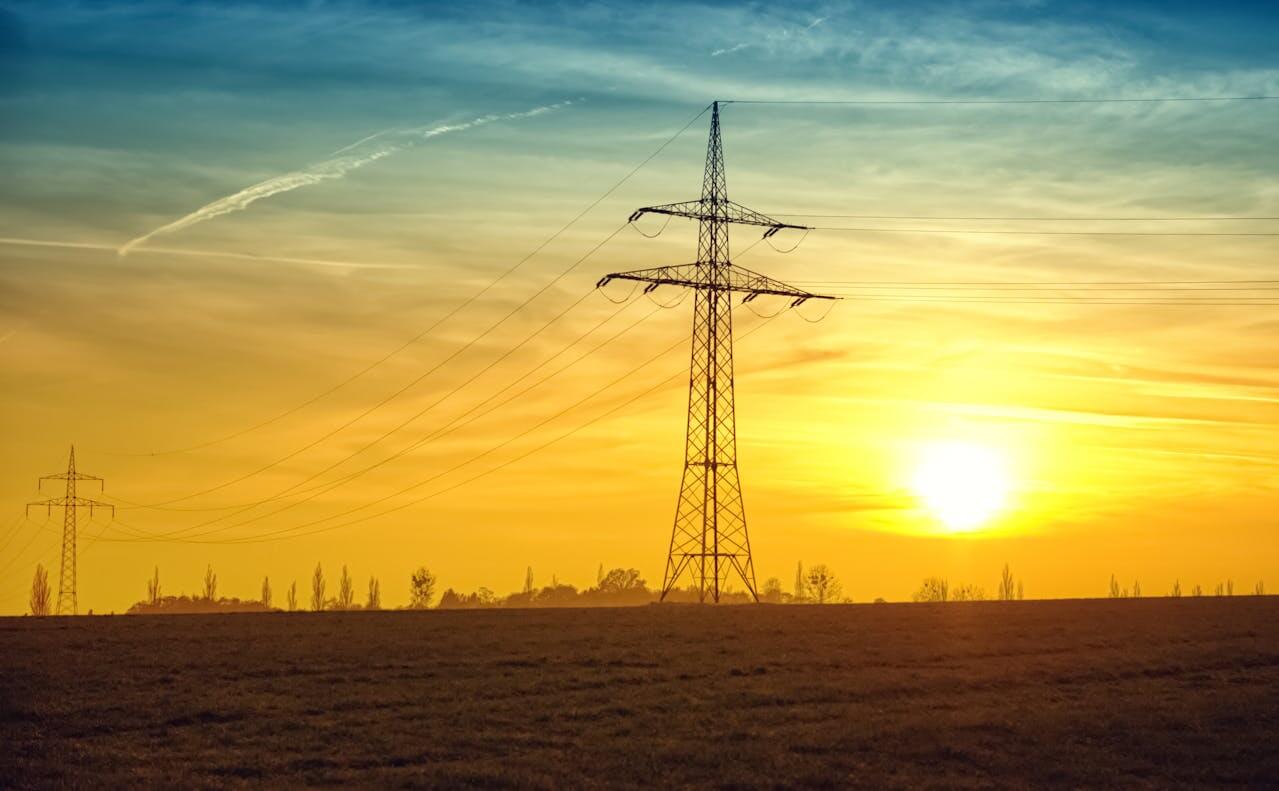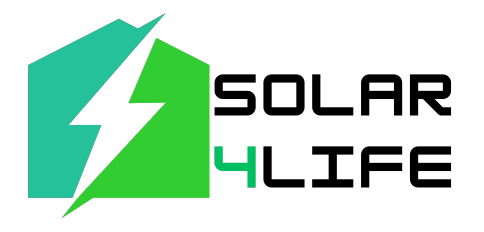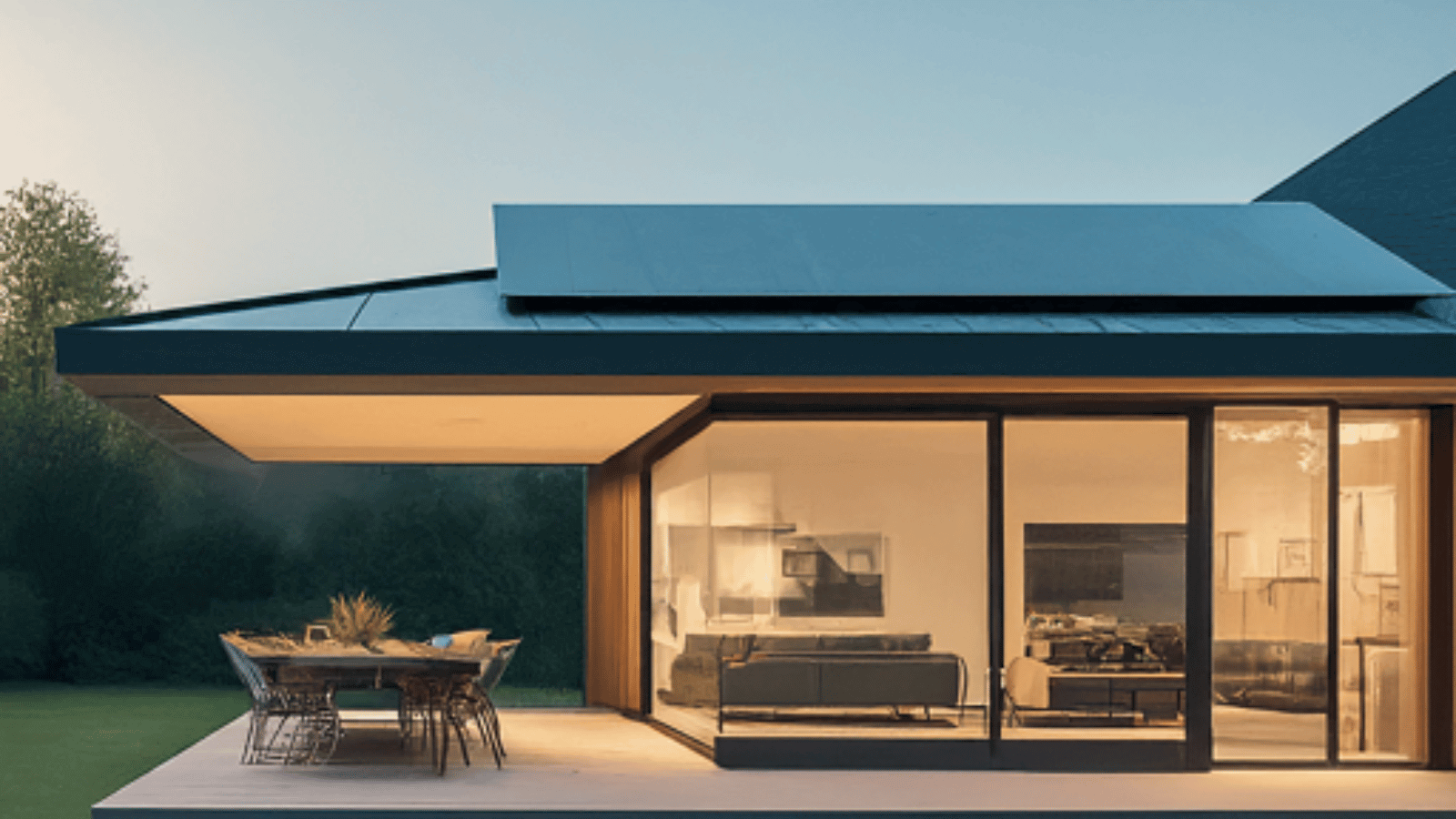Discover how to buy the best solar inverter in Australia with our comprehensive guide. Make an informed choice with expert tips and insights.
What is the primary purpose of a solar panel inverter? In a nutshell: The main function of a solar inverter or power inverter is to convert the direct current (DC) output of a solar panel system into alternating current (AC) electricity suitable for household use. It’s no wonder that the search for the best solar inverters in Australia has intensified, especially given the boom in the adoption of solar power systems across the country.
In this guide, we will analyze instructions for aside best solar inverter australia. The article goes on to simplify the concept further by outlining what an inverter is and distinguishing between the varieties available such as the microinverters and the hybrid inverters as well as encompassing the leading solar inverter brands operating in the industry, especially Growatt, Sungrow, and Goodwe.

We also look into additional important aspects that conciliate family relations: efficiency, Wi-Fi, or Australian Standard AS 4777 compliance, to name just a few. Correct choices for inverters will also be explained, in case you live in Australia or elsewhere, and you are going to design a solar system there.
Understanding Solar Inverter Basics
What is a solar inverter?
The solar inverter is also an important element in a solar power system, just as a CPU is important for a computer. It changes the electricity produced by the solar panels, which are in direct current (DC) form, into alternating current (AC) which is the form of electricity suitable for home and business use. Consider it the computer of the solar system, which helps in transforming solar energy into energy that can be harnessed by electrical equipment and gadgets.
How does a solar inverter work?
The cycle begins when the light comes in contact with the solar panels’ photovoltaic cells. These cells, which incorporate thin semiconductor layers of crystalline silicon, convert the light into electric power. This is done in the form of a unidirectional steady current known as Direct current (DC) for which current flows only in one direction. Most homes and indeed the power grid use Alternating Current (AC), which has changed direction and voltage.
Here's where the inverter steps in. It is taking the DC power, and converting or turning the power through a transformer to produce AC power. So now, the Activity turned into an AC form - this means that the inverter contains switching transistors operating in a rapidly on/off mode that 'converts' direct current (DC) into the equivalent of alternating current (AC). This switching leads to a gradual change in the output producing a sine wave which is quite similar to what most household appliances require to work normally.
Also Read: How Does A Solar Battery Work? | Energy Storage Explained for Beginners
Why is the inverter crucial for your solar system?
The inverter is necessary because it converts the electricity generated by the solar panels to electricity consumable within the house. The electricity generated by solar panels would not be put to use for the majority of household appliances in the absence of an inverter.
But inverters do more than just convert DC to AC. They also:
-
Optimize energy production by tracking the maximum power point of your solar panels.
-
Monitor system performance and detect issues like panel shading or malfunctions.
-
Provide a communication interface for your solar system, allowing you to track energy production and consumption.
-
Act as a safety mechanism. Grid-tied inverters have an isolation switch that cuts off the system from the grid if power levels fall below acceptable levels, protecting utility workers during maintenance.
The control and precision of your inverter, even the smallest components, will determine the quality of the performance of your solar system. Quality inverters with high conversion efficiency only waste minimal energy that would have come from your panels during the transformation process.
It's proper to say therefore that the inverter is what conductive electricity from solar panels to practical uses. This is the part that enables you to capture the energy from the sun and utilize it to cool your normal phone on charge or your refrigerator. Most people today may not appreciate the development of solar energy as an alternative source of power due to reason that most people do not understand how solar energy works.
You may also like: Ultimate Guide To Buy Solar Panels For Your Home
Types of Solar Inverters
The most important consideration you should have is choosing the best solar inverter for your system from all the alternatives that exist. As with every type, there are pros and cons. Thus, let us look at some of the key types of solar inverters so that you can decide after a thorough review.
String inverters
These inverters are the most utilized and relatively the cheapest among other types of solar inverters. It involves pooling together solar panels into strings and engaging only one central inverter that converts a total direct current into an alternating current. This arrangement is most appropriate for medium to large sizes (20kW or more) installations as they are the most scalable option available.
One of the main advantages of string inverters is their reliability. Since this product has been in the market for decades, people have most of the kinks worked out making it a reliable technology. They also offer a cost-effective solution, which appeals to many homeowners seeking the best solar inverter for home use while remaining conscious of budget.
Nonetheless, string inverters have drawbacks. For example, if one panel in the string is shaded or underperforming, the output from most, if not all, panels in that string will be reduced.
This means that if conditions are only partially optimal for energy production, there is likely to be some loss in the electricity that could otherwise have been produced. In addition, string inverters normally allow the monitoring of the whole system rather than the individual panels.
Microinverters
Microinverters are small inverters that are provided for every solar panel. They do this at the solar panel which has its benefits. This configuration is especially advantageous for roof panels with unusual shapes, different slopes, or partial shading.
Last but not least, solar energy system designers have not locked themselves in the grid-tied phase only. It is one of the most distinctive advantages of this device, or rather, the system in general.
For example, if one solar panel operates better than the other, the electricity produced may be limited by brute force attempting to transfer that extra amount that has nowhere to go. This may result in additional energy generation, particularly under unfavorable conditions.
System expansion is simpler with microinverters as well. If you want to add on to the system, with regards to how many panels are connected, adding on to systems using microinverters is a lot easier and less of a hassle. They also offer monitoring at each panel allowing you to see how each panel is performing.
For larger systems, however, microinverters are normally priced at a premium as compared to string inverters, which may be a drawback of these systems. They are also installed on the roof which makes maintenance and repairs more difficult.
Power optimizers
Power optimizers act as hybrid solutions of string inverters and microinverters. It is a device that is attached to each panel and focuses on the DC output of the panel before it is sent to a centralized string inverter. The arrangement takes most of the advantages of both the string inverters and power microinverters.
Like inverters, power optimizers reduce the shading of an individual panel. Monitoring at the level of the panels is also available to provide you with accurate details of how the entire system is functioning. With regards to costs, systems with power optimizers tend to be cheaper than those with microinverters but higher than those with free-standing string inverters.
Hybrid inverters
Hybrid inverters are designed for robust functions that integrate features found in a typical solar inverter and a battery inverter. With the capability of running three power sources – the solar panel, the batteries, and the grid – at the same time, this is perfect for those who are planning to incorporate battery storage in their solar configuration now or in the future.
Key Factors to Consider While Buying a Solar Inverter
Efficiency and performance
As with all appliances, efficiency continues to be of utmost importance when choosing the best inverter for solar panels. In fairness, the solar inverter does reach quite high efficiencies of around 93-96 % throughout its operation, again about the make and type.
However, it should be made clear that they are never fully efficient since additional power is required to derive this level of efficiency, which is commonly in the range of 10-25W. When you have a treated high-output solar inverter, it implies that even more power is generated than what is dissipated in the form of heat and it thus uplifts the total system efficiency.
To maximize performance, look for inverters equipped with Maximum Power Point Tracking (MPPT) enhancements. They help maximize structures by helping the inverter to run at the most efficient voltage and current levels of the solar array.
Size and capacity
The efficiency of your solar inverter selection and its fitting into your solar system is fundamental in ensuring optimal performance of the systems. As a general guideline, the grading of an inverter should be equal to the DC rating of the solar panel system.
For example, let’s presume that you want to install a solar energy system with the proposed 6-kilowatt solar energy generating capacity, it can be expected that the proposed inverter should approximately weigh about 6,000 watts.
It is important that, especially concerning the solar units, the inverter should sufficiently meet the output DC of the solar unit. If an inverter that is not well sized is installed on the units, the warranty and effectiveness performance of the solar PV systems will be affected.
Whiking sizing the ideal sized one, ensures that power usage that will come from the house, output from the solar arrays, and expansion possibilities if any are factored in.
Brand reputation and warranty
When shopping for a solar inverter, opting for a well-established brand with a prolonged warranty should be a priority. Every manufacturer offers different warranties for their solar inverters. String inverters tend to have a warranty of 10-12 years; microinverters and power optimizers can even offer up to 25 years of warranty.
In comparing warranties, you will need to note that most of these warranties do not include any shipping & handling costs and installation labor which are necessary during the replacement of the solar inverter.
There are, however, even some of the strongest brands that will pay for labor and transportation as well. Hoymiles, SolarEdge, Tigo, SMA, and Enphase are well-reputed in the industry for their strong warranty support.
Smart features and monitoring capabilities
Now, these inverters are equipped with modern functionality such as monitoring which helps you check how your system is performing on a real-time basis. Inverters with built-in wifis and uncomplicated mobile apps or web interfaces should be sourced with these inverters. Such features help you keep track of your solar production, diagnose problems, and adjust the use of energy.
Certain inverters have panel-level monitoring capabilities which help in understanding how every other panel works within the system. In response, it makes it easier for such low-performing panels to be rectified and enhanced.
Installation and Maintenance Tips
Nothing comes easy when it comes to fixing and even making changes to your solar inverter. This means that there is a need for correctness in its usage and making certain that it is being maintained properly for better results.
Ideal placement of your inverter
Proper site selection of your inverter is important too. The Solar inverter is best installed in places that have shade while the surroundings are well-aerated. Shading the unit even sleeping will further protect the unit because during operation the inverter also generates heat. Constant exposure of the solar inverter to sunshine can lead to excessive heating resulting in low efficiency and shortening its service life.
When it comes to grid-tied inverters, they are mostly outdoor installable since they are built for that purpose. However, the off-grid inverters are usually indoors close to the meter due to their minimal weatherproofing. When going for outdoor installation, make sure that the inverter is protected from moisture, dust, and rainfall.
The distance between the panels and the inverter must also be considered. To reduce power losses that are caused by voltage drop, the distance of the cable is recommended to be the shortest possible. Thicker cables can however help in minimizing the losses in voltage if the distance is long and cannot be avoided.
Regular monitoring and maintenance
Adopting a forward-looking maintenance strategy is very important when it comes to proposing and enhancing the safety of systems so that inverter faults do not occur. Guidance on how best to approach issues around the performance of your inverter should include a regular follow-up of its performance highlights.
One of the important duties in repair is to ensure that the inverter is maintained clean at all times. Use a vacuum cleaner to remove dust or any trash that may be stuck on the cooling fan and the air vent. This ensures proper airflow and also avoids overheating.
It is also vital to evaluate the inverter and the terminal of the energy storage system for any loose connections. Incomplete connections expose the internal electrical work of the inverter to arcing which may create a lot of heat and damage the inverter internal parts.
Troubleshooting common issues
Here however we would point out that sometimes even with proper installation and effective maintenance measures solar inverters do fail or work improperly. An inverter or inverter system failure or defect has been quite common which is usually caused by overheating, voltage spikes as well as aging.
If you see any warning or code errors on the inverter’s LED monitor, please refer to your user guide for assistance. Some errors are user errors that can be corrected after following the given procedures and others can be internal errors that will need a technician to help.
The other concern that needs attention is the loss of output resulting from external factors. Too hot, too moist, or too wet environments may undermine the inhalator’s efficiency. Make sure your underwater inverter is placed in an area where this won't happen.
Performing regular performance analysis and also maintaining a record of the repairs done on the inverter will help you determine areas of constant or seasonal performance problems. This information is essential to fine-tune your maintenance regimen to maximize the efficacy of your PV system for many years to come.
Maximizing the efficiency and life span of the solar inverter can also be achieved by following these installation and maintenance tips, thereby providing a reliable and efficient energy experience for many years to come.
Choosing Solar4Life for Sustainable Energy Solutions
The benefits of choosing solar energy are remarkable, ranging from reducing environmental impact and lowering energy costs to ensuring a reliable, self-sufficient power source for years to come.
At Solar4Life, our core principle is preparing for energy independence by providing a solar power solution tailored specifically to your needs. Our services are designed to be adaptable and flexible, keeping pace with advancements in solar technology to ensure you always receive efficient, clean energy.
Why not give yourself or your household the best energy solution possible with Solar4Life? Contact us today for expert guidance on how solar energy can transform your energy use. Let us help you achieve energy independence, save money, and contribute to a sustainable future.
FAQs
What should I consider when selecting a solar inverter?
When choosing a solar inverter, consider these five key factors:
-
Solar Inverter Battery: The durability of the inverter largely depends on its battery.
-
Safety Certification: Ensure the inverter meets safety standards.
-
Inverter's VA Rating Range: Check the voltage-ampere rating to match your needs.
-
Peak Power Considerations: Understand the peak power capabilities of the inverter.
-
Inverter Brand: Opt for a reputable brand to ensure quality and reliability.
Which brand of solar inverter is the best?
Some of the top solar inverter manufacturers include TOSUNlux, Sungrow, Huawei, Solis, Growatt, SMA, Power Electronics, Sineng, SolarEdge, and Fimer. These brands are well-regarded in the industry for their quality and performance.
Is a larger solar inverter a better choice?
Oversizing a solar inverter can be beneficial as it allows the system to handle more energy than its rated capacity, up to 133% more. This capability can lead to higher energy yields early in the day and throughout its operational period.
What are the characteristics of a high-quality solar inverter?
A good solar inverter should have an efficiency rating of at least 95%. The most efficient inverters on the market reach up to 99% efficiency.

